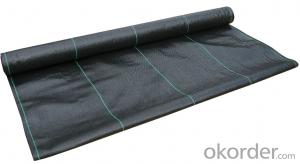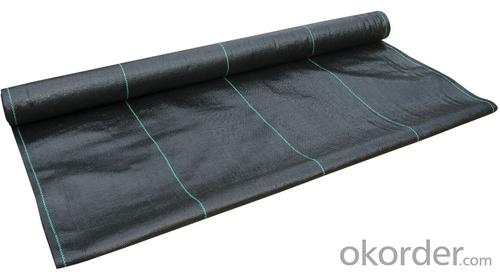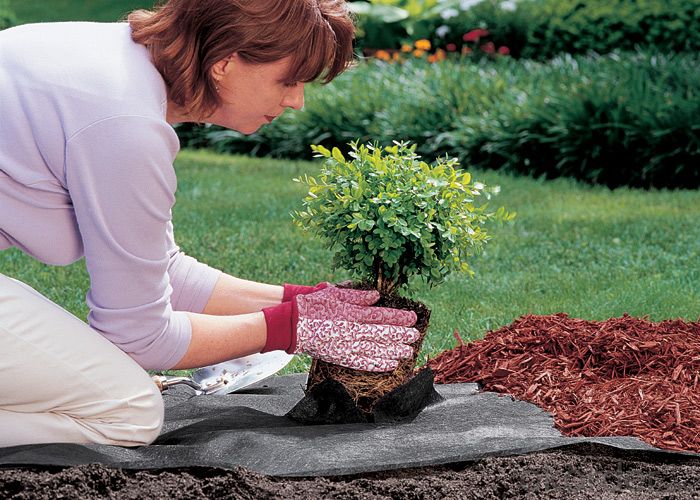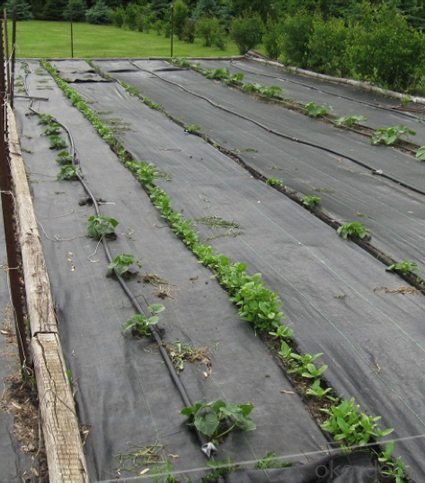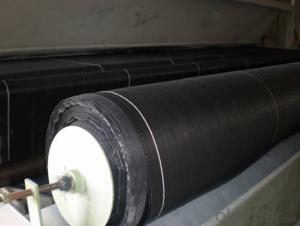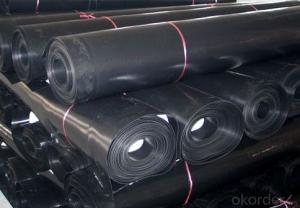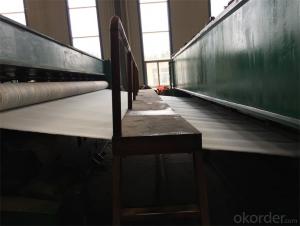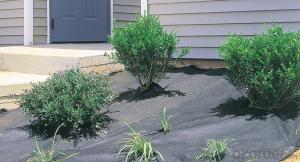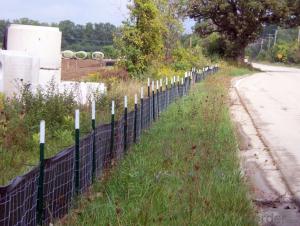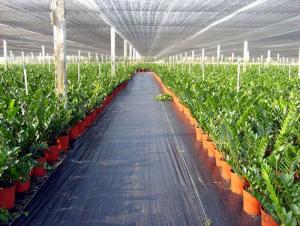Geotextile Brico Wooden Silt Fence / Polypropylene Woven Fabric / Landscape
- Loading Port:
- China main port
- Payment Terms:
- TT OR LC
- Min Order Qty:
- 5000 m²
- Supply Capability:
- 100000 m²/month
OKorder Service Pledge
OKorder Financial Service
You Might Also Like
1.PP Woven Fabric Description:
Spunbonded PP non woven weed control mat is made of environmentally friendly raw materials, pp spunbond nonwoven fabric. It used to prevent the growth of weed, without the use of potentially dangerous chemical sprays or labor intensive hoeing. Once installed, weed mat will continue providing protection for years without maintenance.
They are permeable fabrics, which allow air, water and nutrients to pass through, and designed to block out the sun to reduce photosynthesis and stop weed growth.
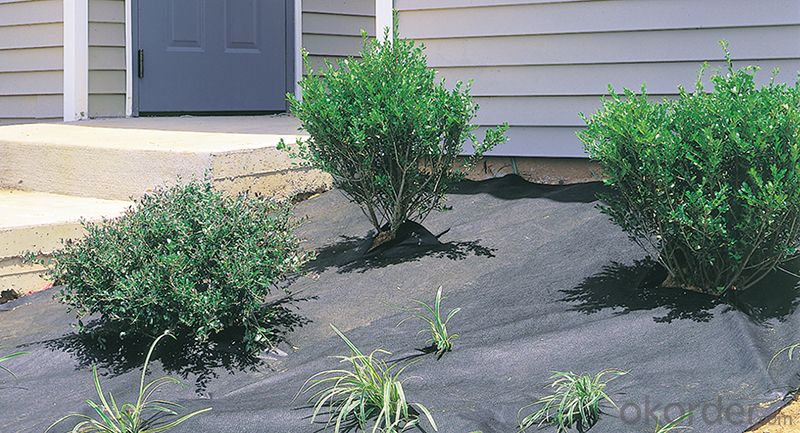
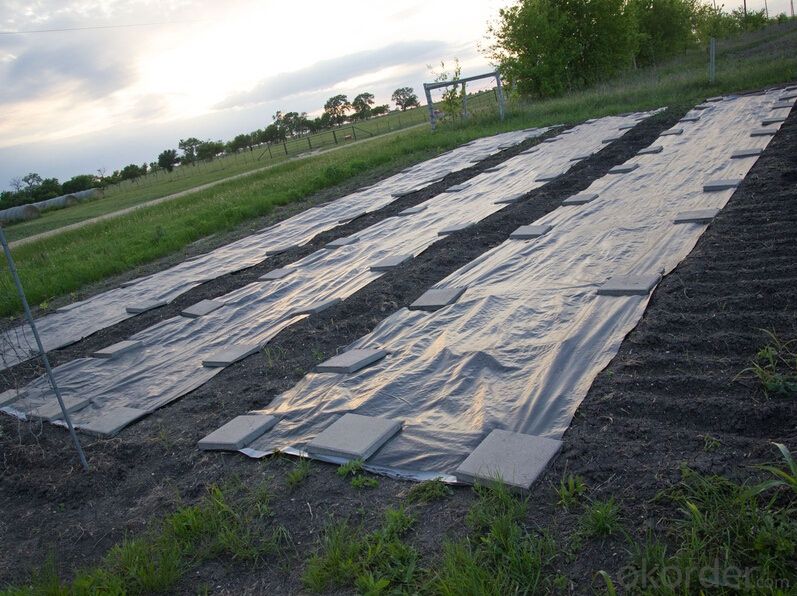
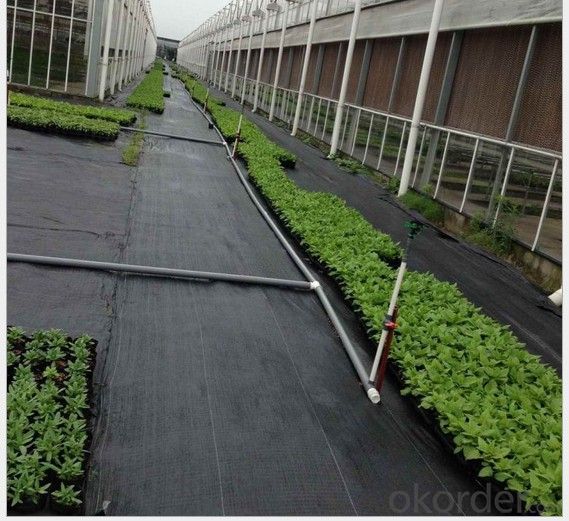
2. PP Woven Fabric Feature:
1. Weed suppressant and drainage control landscaping fabric
2. Spun bonded non-woven fabric – will not fray when cut
3. Easy to use
4. Environmentally friendly
5. Allows water, air and nutrients through, suppressing weeds without the use of chemicals
6. Good alternative to Plantex® where cost is a factor
7. UV Stabilised
8. Reduces the level of watering required due to the slower rate of water evaporation
3. PP Woven Fabric Function:
1. Cover crops in the ground surface,prevent weeds and against the insect
2. Controlling soil humidity and the temperature
3. Does not affect the growth of the crops
4. Protects plants from harmfully solar radiation
5. Air permeability, water permeability help crops growth.
6. Mothproof, eco-friendly, breathable, anti-bacteria, tear-resistant, fusible
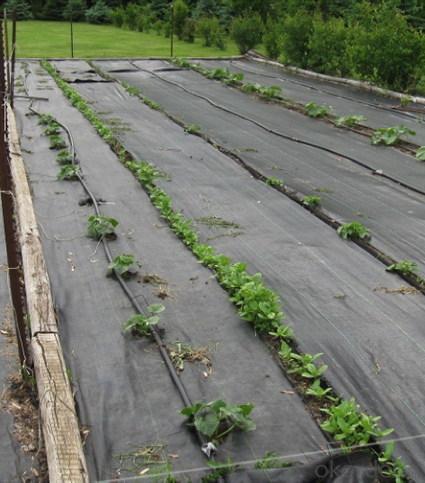
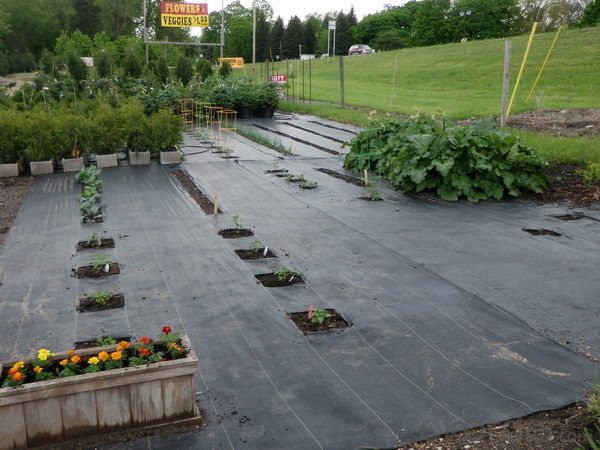
4. FAQ:
Q1: What is your minimum order quantity?
A:The minimum order quantity is 5000 ,but it is negotiable.
Q2:What is your payment terms?
A: T/T,Western Union,Paypal,L/C...
Q3:What is your delivery time?
A:Production time usually costs 2-20 days.
Waiting to cooperate with you!
- Q: Geotextile is what is the role to play with what?
- Geotextile is the main role of reinforcement, filter, mostly used in landfills, water conservancy projects, composite geotextile or composite geomembrane (a cloth a film, two cloth a film, multi-cloth film) with anti Infiltration of the role, this time there is the role of geotextile protective film
- Q: Geotextile, one ton, replaced by a square meter how much money formula
- According to square meter settlement, I am specialized in the production of geotechnical materials
- Q: Can geotextiles be used in erosion control on riverbanks?
- Yes, geotextiles can be used in erosion control on riverbanks. They provide an effective solution by preventing soil erosion, improving stability, and allowing for vegetation growth. Geotextiles act as a barrier that retains soil particles while allowing water to pass through, reducing the impact of water flow on riverbanks and preventing further erosion.
- Q: Can geotext prevent rooting?
- Use a composite geotextile on it
- Q: What are the installation guidelines for geotextiles used in erosion control blankets?
- The installation guidelines for geotextiles used in erosion control blankets typically involve preparing the site by removing any vegetation, debris, or loose soil. The geotextile is then unrolled and placed over the desired area, ensuring it is smooth and wrinkle-free. It is important to secure the edges of the geotextile using stakes or pins to prevent movement. Additionally, proper overlap and anchoring techniques should be employed to ensure optimal erosion control. It is always recommended to consult the specific manufacturer's guidelines for detailed instructions.
- Q: What are the cost implications of using geotextiles?
- The cost implications of using geotextiles can vary depending on factors such as the type and quality of the geotextile, the size of the project, and the specific application. In general, geotextiles can add an additional cost to a project, as they need to be purchased and installed. However, they can also provide cost savings in the long run by reducing the need for expensive soil stabilization measures, increasing the lifespan of structures, and minimizing maintenance and repair costs. Additionally, geotextiles can provide cost-effective solutions for erosion control, slope stabilization, and drainage, which can help prevent costly damages and disruptions.
- Q: Geotextile how much money a square
- Geotextile laying - including the labor costs (according to geotextile specifications and laying conditions and requirements are different), material costs (specific quality requirements and thickness, are not the same ..), mechanical use costs (such as transport, sewing System, hoisting, etc.). The price is different. Sometimes the construction of our geotextile laying, the price per square meter from 9 yuan to 50 yuan range.
- Q: Welding of impervious geotextile
- 1. Seam processing is the key to the construction process, the general use of heat welding method, PE film surface heat treatment, so that the surface melting, and then through the pressure, so that one fusion. 2. For the laying of a good geomembrane, edge seams require no oil, water, dust and so on. 3. Before welding to adjust the seam at the two sides of the PE single film, so that a certain width of the lap, lap width is generally 6 ~ 8 cm and smooth, no wrinkles. 4. Use special welding machine for welding. Welding construction effect map:
- Q: Can geotextiles be used in agricultural applications?
- Yes, geotextiles can be used in agricultural applications. They are commonly used to control soil erosion, improve soil stability, and enhance drainage in agricultural fields. Geotextiles can also be used for weed control, separating different soil layers, and protecting plants from pests and harsh weather conditions.
- Q: Where to sell black geotextile prices
- I have 6 meters per square meter to 1 block
Send your message to us
Geotextile Brico Wooden Silt Fence / Polypropylene Woven Fabric / Landscape
- Loading Port:
- China main port
- Payment Terms:
- TT OR LC
- Min Order Qty:
- 5000 m²
- Supply Capability:
- 100000 m²/month
OKorder Service Pledge
OKorder Financial Service
Similar products
Hot products
Hot Searches
Related keywords
